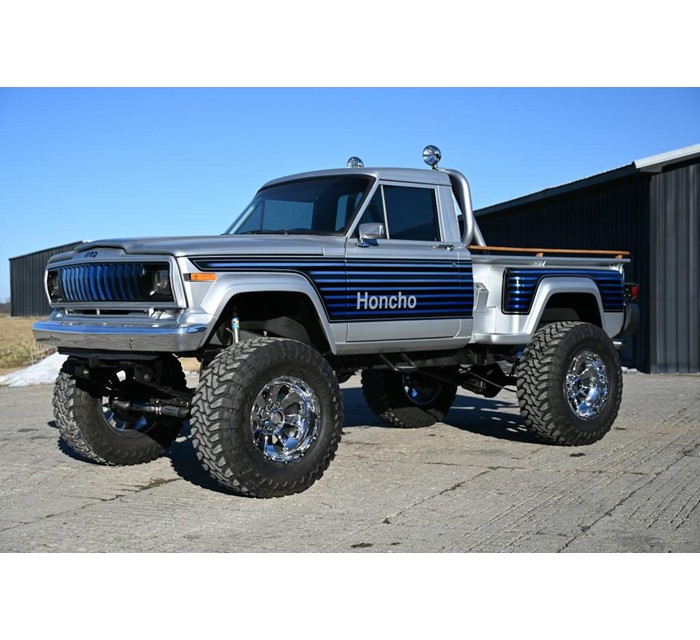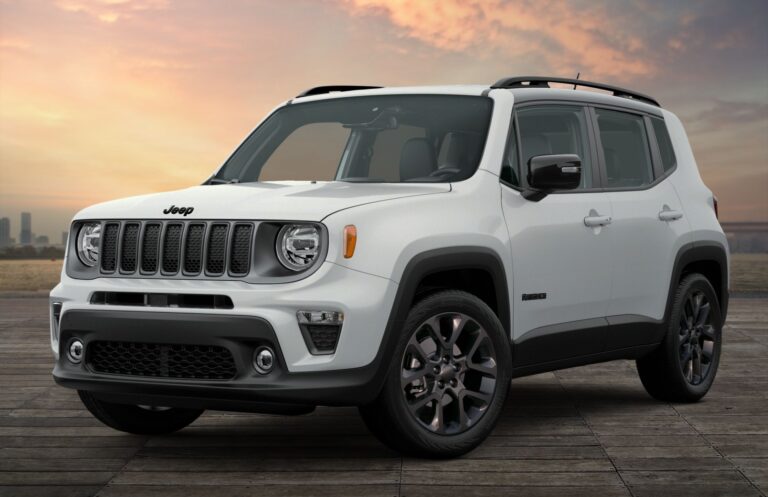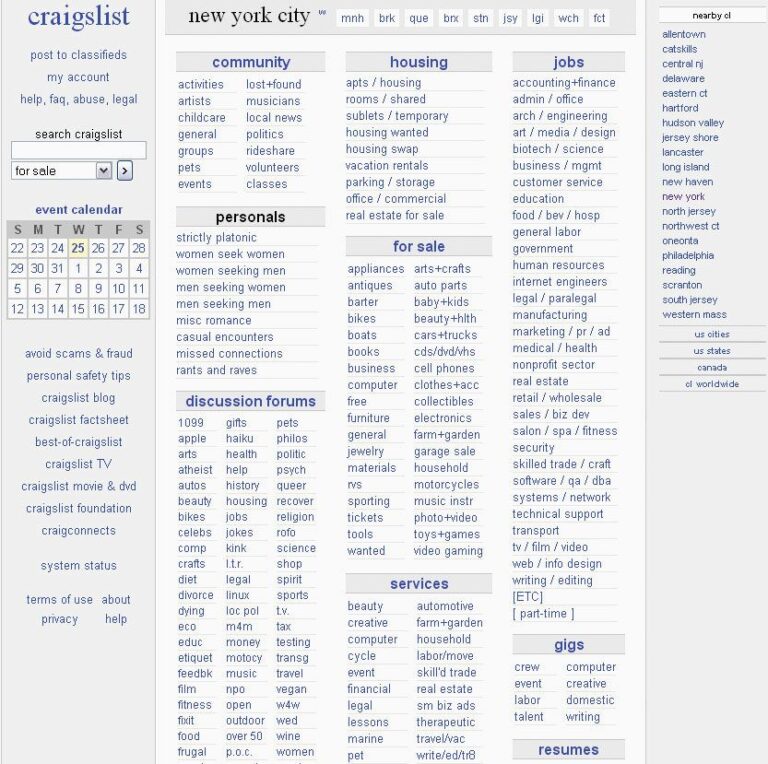1998 Jeep Cherokee 4×4 For Sale: Your Guide to Owning an Off-Road Icon
1998 Jeep Cherokee 4×4 For Sale: Your Guide to Owning an Off-Road Icon /jeeps.truckstrend.com
The automotive landscape is constantly evolving, yet some vehicles transcend mere transportation to become enduring legends. Among them, the Jeep Cherokee XJ stands tall, and for many enthusiasts and practical adventurers, the 1998 model year holds a special significance. More than just a utility vehicle, a 1998 Jeep Cherokee 4×4 for sale represents an opportunity to acquire a robust, versatile, and highly capable machine – a true symbol of American ingenuity and go-anywhere capability. This comprehensive guide will delve into what makes the 1998 Cherokee XJ a coveted classic, providing insights for prospective buyers to navigate the market and make an informed purchase.
Why the 1998 Jeep Cherokee XJ? A Timeless Icon
1998 Jeep Cherokee 4×4 For Sale: Your Guide to Owning an Off-Road Icon
Introduced in 1984, the Jeep Cherokee (XJ) revolutionized the SUV market, pioneering the compact SUV segment with its unibody construction and rugged off-road prowess. By 1998, the XJ was in its mature phase, benefiting from years of refinement while retaining the core attributes that made it famous. The 1998 model year is often considered a sweet spot by enthusiasts. It features the updated interior introduced in 1997, offering improved ergonomics and aesthetics over earlier models, yet precedes the minor engine head casting issues that affected some 2000-2001 4.0L engines.
At its heart, the 1998 Cherokee 4×4 is powered by the legendary 4.0-liter "High Output" (HO) inline-six engine. This engine is renowned for its incredible durability, robust torque delivery, and simple design, making it highly desirable for both daily driving and serious off-roading. Most 1998 models were paired with the Aisin-Warner AW4 automatic transmission, another component celebrated for its reliability. Transfer case options typically included the Command-Trac NP231 (part-time 4×4) or the Selec-Trac NP242 (full-time capable 4×4), offering versatile traction options. Its solid front (Dana 30) and rear (often Chrysler 8.25 or Dana 35) axles, combined with coil springs up front and leaf springs in the rear, provide a tough, articulate suspension setup ideal for tackling challenging terrain.
Key Features and Benefits of the 1998 Cherokee 4×4
The allure of a 1998 Jeep Cherokee 4×4 goes beyond its mechanical specifications. It offers a unique blend of benefits that continue to attract a loyal following:
- Unmatched Durability and Reliability: The 4.0L HO engine is often cited as one of the most reliable engines ever built, capable of hundreds of thousands of miles with proper maintenance. The AW4 transmission is equally robust. This inherent reliability translates to lower ownership costs and greater peace of mind.
- Legendary Off-Road Prowess: Despite its compact size, the XJ Cherokee is a formidable off-road machine. Its relatively short wheelbase, excellent approach and departure angles, solid axles, and capable 4×4 systems allow it to navigate trails that would challenge larger, more modern SUVs. It’s truly "trail-rated" in its purest form.
- Simplicity and Modifiability: The XJ’s straightforward design makes it relatively easy to work on, even for amateur mechanics. Furthermore, the aftermarket support for the XJ is immense, offering an unparalleled array of parts for lifts, armor, driveline upgrades, and more. This makes it a perfect canvas for customization, whether you’re building a dedicated rock crawler or an overland adventure rig.
- Practicality and Daily Drivability: While renowned for its off-road capabilities, the 1998 Cherokee also functions well as a daily driver. Its compact footprint makes it maneuverable in urban environments, and its surprisingly spacious interior (for its size) offers decent cargo capacity for groceries, gear, or even camping trips.
- Strong Value Retention: Well-maintained examples of the 1998 Jeep Cherokee XJ have shown remarkable value retention. They are not merely depreciating assets but often appreciating classics, especially those in original or tastefully modified condition. This makes them a smart investment for enthusiasts.

What to Look For: A Comprehensive Buyer’s Guide
When considering a 1998 Jeep Cherokee 4×4 for sale, a thorough inspection is paramount. These vehicles are now over two decades old, and their condition will vary wildly depending on past ownership, maintenance, and climate.

- Rust: This is the number one enemy of the XJ. Inspect the unibody frame rails (especially near the steering box and leaf spring mounts), rocker panels, floorboards (under the carpet), and rear quarter panels (behind the wheels). Surface rust is common, but through-rust or significant structural rust should be a major red flag.
- Engine:
- Oil Leaks: Common areas include the rear main seal (a drip is often normal, a stream is not) and the oil filter adapter.
- Cooling System: Check the radiator for leaks or signs of clogging. Ensure the electric fan engages. Look for signs of overheating (discolored coolant, residue around the overflow tank).
- Exhaust Manifold: Cracks are very common, leading to a ticking sound, especially when cold. It’s often not critical but indicates neglect.
- "Death Wobble": While not an engine issue, this violent steering wheel shake at highway speeds is a common XJ complaint, usually stemming from worn steering and suspension components (track bar, ball joints, tie rod ends).

- Transmission & Transfer Case:
- AW4 Automatic: Check fluid condition (should be red, not brown or burnt). Test shifting through all gears, including reverse. Look for harsh shifts or slipping.
- Transfer Case (NP231/NP242): Engage 4-High and 4-Low. Listen for grinding or whining. Ensure the shifter moves smoothly. Check for leaks around the seals.
- Axles & Driveshafts: Check for leaks at the differential covers and pinion seals. Inspect U-joints on both driveshafts for play or rust. Listen for unusual noises (whining, clunking) from the differentials during the test drive.
- Suspension & Steering:
- Bushings: Inspect all control arm bushings, leaf spring bushings, and sway bar bushings for cracks or deterioration.
- Ball Joints/Tie Rod Ends: Check for play.
- Leaf Springs: Look for sagging rear leaf springs, a common issue.
- Shocks: Check for leaks or excessive bounce.
- Electrical: Test all power windows, locks, lights, gauges, and HVAC (AC and heater). Electrical gremlins can be frustrating but are often due to poor grounds or aged wiring.
- Interior: Check the condition of seats, headliner (prone to sagging), dashboard (prone to cracking), and door panels.
- Documentation: Always ask for service records. This provides invaluable insight into the vehicle’s history and how well it was maintained. A clean title is essential.
- Test Drive: Drive the vehicle on various surfaces, including highway speeds and some uneven terrain if possible. Pay close attention to steering response, braking, any unusual noises, and how the 4×4 system engages.
Common Challenges and Solutions for XJ Owners
While incredibly durable, the XJ has a few common quirks that prospective owners should be aware of:
- Cooling System Issues: The 4.0L runs hot. Overheating is a common issue if the system is neglected. Solution: Proactive maintenance, including radiator flushes, replacement of the thermostat, water pump, and fan clutch as needed. Upgrading to an all-aluminum radiator is a popular and effective solution.
- Rust: As mentioned, rust is a perennial threat. Solution: Early intervention for surface rust, undercoating, and regular washing, especially in rust-prone climates. Frame repair kits are available for more significant issues.
- Rear Main Seal Leak: Almost all 4.0L engines will leak from the rear main seal at some point. Solution: It’s not usually a catastrophic leak and can often be lived with, but replacement is a moderately involved job.
- Headliner Sag: The adhesive holding the headliner fabric degrades over time. Solution: A common DIY repair involving removing the headliner board, scraping off old foam, and reapplying new fabric with high-temp adhesive.
- Death Wobble: This is not a manufacturing defect but a symptom of worn steering and suspension components. Solution: Meticulous inspection and replacement of worn track bar, ball joints, tie rod ends, control arm bushings, and proper alignment.
Customization and Aftermarket Potential
One of the most appealing aspects of the 1998 Jeep Cherokee XJ is its incredible aftermarket support. It’s a blank canvas for customization, allowing owners to tailor their vehicle to specific needs and preferences.
- Lift Kits: Ranging from mild 2-inch lifts for tire clearance to extreme 6+ inch long-arm kits for serious articulation.
- Tires and Wheels: Upgrading to larger, more aggressive tires significantly enhances off-road capability and appearance.
- Bumpers, Rock Sliders, and Armor: Steel bumpers offer better approach angles and winch mounting points, while rock sliders protect rocker panels on trails.
- Drivetrain Upgrades: Axle swaps, locker installations, and stronger driveshafts for extreme use.
- Interior Enhancements: Seat upgrades, modern stereo systems, and cargo management solutions.
This vast ecosystem of parts means that finding components for repair or modification is rarely an issue, making the XJ a truly sustainable vehicle to own and enjoy for years to come.
Practical Advice and Actionable Insights
For those actively seeking a 1998 Jeep Cherokee 4×4 for sale, here are some actionable tips:
- Set a Realistic Budget: Beyond the purchase price, factor in immediate maintenance items (fluids, filters, spark plugs), potential repairs (tires, brakes, suspension components), and any desired modifications.
- Prioritize Condition Over Mileage: A well-maintained XJ with higher mileage is often a better buy than a lower-mileage example that has been neglected.
- Get a Pre-Purchase Inspection (PPI): If you’re serious about a vehicle, invest in a PPI by a trusted independent mechanic familiar with older Jeeps. They can spot issues you might miss.
- Consider Your Intended Use: Are you looking for a daily driver, a weekend trail rig, or a dedicated off-road project? This will influence what condition and modifications you should prioritize.
- Research Local Laws: Be aware of emissions regulations in your area, as older vehicles may require specific considerations.
- Don’t Rush: The XJ market is active. Take your time to find the right vehicle that fits your needs and budget.
1998 Jeep Cherokee 4×4 For Sale: Estimated Price Guide
The price of a 1998 Jeep Cherokee 4×4 varies significantly based on its condition, mileage, maintenance history, modifications, and geographical location. The table below provides a general estimate:
| Condition Category | Estimated Price Range (USD) | Typical Mileage | Key Characteristics & Notes |
| :—————– | :————————– | :————– | :—————————————————————————————————————————————————————————————————————————————————————————————————————————————————————————————————————————————————————————————————————————————————————————————————————————————————————————————————————————————————————————————————————————————————————————————————————————————————————————————————————————————————————————————————————————————————————————————————————————————————————————————————————————————————————————————————————————————————————————————————————————————————————————————————————————————————————————————————————————————————————————————————————————————————————————————————————————————————————————————————————————————————————————————————————————————————————————————————————————————————————————————————————————————————————————————————————————————————————————————————————————————————————————————————————————————————————————————————————————————————————————————————————————————————————————————————————————————————————————————————————————————————————————————————————————————————————————————————————————————————————————————————————————————————————————————————————————————————————————————————————————————————————————————————————————————————————————————————————————————————————————————————————————————————————————————————————————————————————————————————————————————————————————————————————————————————————————————————————————————————————————————————————————————————————————————————————————————————————————————————————————————————————————————————————————————————————————————————————————————————————————————————————————————————————————————————————————————————————————————————————————————————————————————————————————————————————————————————————————————————————————————————————————————————————————————————————————————————————————————————————————————————————————————————————————————————————————————————————————————————————————————————————————————————————————————————————————————————————————————————————————————————————————————————————————————————————————————————————————————————————————————————————————————————————————————————————————————————————————————————————————————————————————————————————————————————————————————————————————————————————————————————————————————————————————————————————————————————————————————————————————————————————————————————————————————————————————————————————————————————————————————————————————————————————————————————————————————————————————————————————————————————————————————————————————————————————————————————————————————————————————————————————————————————————————————————————————————————————————————————————————————————————————————————————————————————————————————————————————————————————————————————————————————————————————————————————————————————————————————————————————————————————————————————————————————————————————————————————————————————————————————————————————————————————————————————————————————————————————————————————————————————————————————————————————————————————————————————————————————————————————————————————————————————————————————————————————————————————————————————————————————————————————————————————————————————————————————————————————————————————————————————————————————————————————————————————————————————————————————————————————————————————————————————————————————————————————————————————————————————————————————————————————————————————————————————————————————————————————————————————————————————————————————————————————————————————————————————————————————————————————————————————————————————————————————————————————————————————————————————————————————————————————————————————————————————————————————————————————————————————————————————————————————————————————————————————————————————————————————————————————————————————————————————————————————————————————————————————————————————————————————————————————————————————————————————————————————————————————————————————————————————————————————————————————————————————————————————————————————————————————————————————————————————————————————————————————————————————————————————————————————————————————————————————————————————————————————————————————————————————————————————————————————————————————————————————————————————————————————————————————————————————————————————————————————————————————————————————————————————————————————————————————————————————————————————————————————————————————————————————————————————————————————————————————————————————————————————————————————————————————————————————————————————————————————————————————————————————————————————————————————————————————————————————————————————————————————————————————————————————————————————————————————————————————————————————————————————————————————————————————————————————————————————————————————————————————————————————————————————————————————————————————————————————————————————————————————————————————————————————————————————————————————————————————————————————————————————————————————————————————————————————————————————————————————————————————————————————————————————————————————————————————————————————————————————————————————————————————————————————————————————————————————————————————————————————————————————————————————————————————————————————————————————————————————————————————————————————————————————————————————————————————————————————————————————————————————————————————————————————————————————————————————————————————————————————————————————————————————————————————————————————————————————————————————————————————————————————————————————————————————————————————————————————————————————————————————————————————————————————————————————————————————————————————————————————————————————————————————————————————————————————————————————————————————————————————————————————————————————————————————————————————————————————————————————————————————————————————————————————————————————————————————————————————————————————————————————————————————————————————————————————————————————————————————————————————————————————————————————————————————————————————————————————————————————————————————————————————————————————————————————————————————————————————————————————————————————————————————————————————————————————————————————————————————————————————————————————————————————————————————————————————————————————————————————————————————————————————————————————————————————————————————————————————————————————————————————————————————————————————————————————————————————————————————————————————————————————————————————————————————————————————————————————————————————————————————————————————————————————————————————————————————————————————————————————————————————————————————————————————————————————————————————————————————————————————————————————————————————————————————————————————————————————————————————————————————————————————————————————————————————————————————————————————————————————————————————————————————————————————————————————————————————————————————————————————————————————————————————————————————————————————————————————————————————————————————————————————————————————————————————————————————————————————————————————————————————————————————————————————————————————————————————————————————————————————————————————————————————————————————————————————————————————————————————————————————————————————————————————————————————————————————————————————————————————————————————————————————————————————————————————————————————————————————————————————————————————————————————————————————————————————————————————————————————————————————————————————————————————————————————————————————————————————————————————————————————————————————————————————————————————————————————————————————————————————————————————————————————————————————————————————————————————————————————————————————————————————————————————————————————————————————————————————————————————————————————————————————————————————————————————————————————————————————————————————————————————————————————————————————————————————————————————————————————————————————————————————————————————————————————————————————————————————————————————————————————————————————————————————————————————————————————————————————————————————————————————————————————————————————————————————————————————————————————————————————————————————————————————————————————————————————————————————————————————————————————————————————————————————————————————————————————————————————————————————————————————————————————————————————————————————————————————————————————————————————————————————————————————————————————————————————————————————————————————————————————————————————————————————————————————————————————————————————————————————————————————————————————————————————————————————————————————————————————————————————————————————————————————————————————————————————————————————————————————————————————————————————————————————————————————————————————————————————————————————————————————————————————————————————————————————————————————————————————————————————————————————————————————————————————————————————————————————————————————————————————————————————————————————————————————————————————————————————————————————————————————————————————————————————————————————————————————————————————————————————————————————————————————————————————————————————————————————————————————————————————————————————————————————————————————————————————————————————————————————————————————————————————————————————————————————————————————————————————————————————————————————————————————————————————————————————————————————————————————————————————————————————————————————————————————————————————————————————————————————————————————————————————————————————————————————————————————————————————————————————————————————————————————————————————————————————————————————————————————————————————————————————————————————————————————————————————————————————————————————————————————————————————————————————————————————————————————————————————————————————————————————————————————————————————————————————————————————————————————————————————————————————————————————————————————————————————————————————————————————————————————————————————————————————————————————————————————————————————————————————————————————————————————————————————————————————————————————————————————————————————————————————————————————————————————————————————————————————————————————————————————————————————————————————————————————————————————————————————————————————————————————————————————————————————————————————————————————————————————————————————————————————————————————————————————————————————————————————————————————————————————————————————————————————————————————————————————————————————————————————————————————————————————————————————————————————————————————————————————————————————————————————————————————————————————————————————————————————————————————————————————————————————————————————————————————————————————————————————————————————————————————————————————————————————————————————————————————————————————————————————————————————————————————————————————————————————————————————————————————————————————————————————————————————————————————————————————————————————————————————————————————————————————————————————————————————————————————————————————————————————————————————————————————————————————————————————————————————————————————————————————————————————————————————————————————————————————–## Beyond the Beep: A Comprehensive Look at the 1998 Jeep Cherokee 4×4 For Sale
The 1998 Jeep Cherokee (XJ) 4×4 holds a unique and revered place in automotive history. Far from being just another used SUV, it represents a sweet spot in the XJ’s long production run, blending classic ruggedness with a touch of modern refinement. For enthusiasts, off-road adventurers, and even those seeking a reliable daily driver with character, a 1998 Jeep Cherokee 4×4 for sale isn’t merely a transaction; it’s an opportunity to acquire a piece of automotive legend. This article will serve as your ultimate guide, exploring what makes this specific model year so desirable, what to look for, and how to navigate the market to find your perfect XJ.
The Enduring Appeal of the 1998 Jeep Cherokee XJ
The Jeep Cherokee XJ, produced from 1984 to 2001, pioneered the compact SUV segment. Its unibody construction, combined with traditional solid axles, created a vehicle that was lighter and more car-like than its predecessors, yet still incredibly capable off-road. The 1998 model year stands out for several compelling reasons:
- The Legendary 4.0L High Output (HO) Inline-Six Engine: This engine is the heart and soul of the XJ. Known for its cast-iron block, robust torque delivery, and incredible longevity, the 4.0L HO is a workhorse capable of hundreds of thousands of miles with proper care. Its simple design also makes it relatively easy to maintain and repair.
- Refined Interior (Post-1997 Update): The 1998 XJ benefits from the interior refresh introduced in 1997. This update brought a more modern dashboard, improved ergonomics, and better-integrated amenities, making it a more comfortable and user-friendly space than earlier XJs, without sacrificing its utilitarian roots.
- Robust Drivetrain Options: Most 1998 4×4 models came with the Aisin-Warner AW4 automatic transmission, widely regarded as one of the most reliable automatic transmissions ever built. Paired with either the Command-Trac NP231 (part-time 4×4) or the Selec-Trac NP242 (full-time capable 4×4), these vehicles offer versatile and dependable traction in various conditions.
- Solid Axle Durability: Unlike many modern SUVs, the XJ retains solid front (Dana 30) and rear (often Chrysler 8.25 or Dana 35) axles. This design provides superior articulation and durability for off-road use, making it highly desirable for serious enthusiasts.
- Unparalleled Aftermarket Support: The XJ boasts one of the largest and most diverse aftermarket communities in the automotive world. Whether you need a replacement part, a heavy-duty off-road upgrade, or a custom accessory, the market is flooded with options, ensuring long-term viability and endless customization possibilities.
These factors combine to make the 1998 Jeep Cherokee 4×4 not just a vehicle, but a platform for adventure, a canvas for personalization, and a testament to enduring automotive engineering.
Understanding the Benefits of Owning a 1998 XJ
Beyond its technical specifications, owning a 1998 Jeep Cherokee 4×4 offers several tangible benefits:
- Exceptional Off-Road Capability: Its compact size, short overhangs, and solid axles allow it to navigate tight trails and overcome obstacles that larger, more complex vehicles often struggle with. It’s a genuine "go-anywhere" vehicle.
- Reliability and Low Running Costs (with proper care): The simplicity and robustness of its core components mean fewer complex electronic systems to fail and relatively inexpensive parts. A well-maintained XJ is surprisingly dependable.
- Ease of Maintenance and Repair: Many common maintenance tasks can be performed by the average DIY enthusiast, saving on labor costs. The engine bay is spacious, and components are generally accessible.
- Strong Community and Knowledge Base: XJ owners are a passionate group. Online forums, social media groups, and local clubs provide a wealth of knowledge, troubleshooting tips, and camaraderie.
- Investment Potential: Unlike most depreciating assets, clean, well-maintained, and original 1998 XJs are beginning to appreciate in value, especially those from rust-free regions. It’s a classic that can be enjoyed and potentially grow in value.
- Versatility: Capable as a daily commuter, a weekend camping rig, a dedicated rock crawler, or an overland adventure vehicle, the XJ adapts to a wide range of uses.
The Comprehensive Buyer’s Guide: What to Scrutinize
Purchasing a 1998 Jeep Cherokee 4×4 requires a diligent approach. Given their age, condition varies widely. Here’s a detailed checklist of what to inspect:
- Rust (Priority #1):
- Unibody Frame Rails: Especially check where the steering box mounts (driver’s side) and around the leaf spring mounts.
- Rocker Panels & Floorboards: Look under the carpet.
- Rear Quarter Panels: Behind the rear wheels, a common rust spot.
- Doors & Hatch: Check bottom edges.
- Actionable Tip: Bring a small magnet. If it doesn’t stick in an area where it should, suspect body filler hiding rust.
- Engine (4.0L HO):
- Oil Leaks: Common around the rear main seal (a drip is normal, a steady stream is not) and the oil filter adapter. Check the valve cover gasket.
- Cooling System: Inspect the radiator for leaks, cracks, or corrosion. Check hoses, water pump (for leaks or play), and thermostat housing. Ensure the electric fan turns on when the engine gets hot or AC is on. Look for milky oil (head gasket) or discolored, sludgy coolant.
- Exhaust Manifold: Listen for a ticking sound, especially when cold. Cracked exhaust manifolds are common but not critical.
- Check Engine Light (CEL): Scan for codes even if it’s off.
- Transmission (AW4 Automatic):
- Fluid Condition: Should be red, not brown or smell burnt.
- Shifting: Test all gears, including reverse, in a test drive. Shifts should be smooth, not harsh or delayed. Listen for slipping.
- Leaks: Check the transmission pan and output seals.
- Transfer Case (NP231/NP242):
- Engagement: Engage 4-High and 4-Low. Ensure it shifts smoothly without grinding or excessive force.
- Noise: Listen for whining, clunking, or grinding sounds, which could indicate a worn chain or bearings.
- Leaks: Check input and output seals.
- Axles & Driveshafts:
- U-Joints: Inspect all U-joints on both driveshafts and the front axle shafts for play, rust, or stiffness.
- Differentials: Check for leaks around the covers and pinion seals. Listen for gear whine during the test drive, especially when coasting or turning.
- Suspension & Steering:
- "Death Wobble" Test: Drive it on the highway and hit a bump. If you experience a violent shake of the steering wheel, it indicates worn components (track bar, ball joints, tie rod ends, control arm bushings).
- Bushings: Inspect all control arm, leaf spring, and sway bar bushings for cracks or deterioration.
- Leaf Springs: Check for sagging in the rear, which can cause a negative rake.
- Shocks: Look for leaks or excessive bounce during the test drive.
- Brakes: Check pad and rotor wear. Ensure the pedal feels firm and consistent. Test the parking brake.
- Electrical: Test all lights (interior/exterior), power windows, power locks, radio, wipers, and HVAC controls (AC and heater).
- Interior: Check for dashboard cracks, sagging headliner, seat tears, and overall cleanliness.
- Documentation: Ask for service records. A history of regular maintenance is a strong indicator of a well-cared-for vehicle. Verify the VIN matches the title and vehicle.
- Test Drive: Don’t skip this. Pay attention to all sounds, smells, and how the vehicle responds to steering, braking, and acceleration. Test 4×4 engagement on a safe, unpaved surface.
Common Challenges and Proactive Solutions
While robust, the XJ has a few well-known eccentricities that are easily addressed:
- Cooling System: The 4.0L is prone to overheating if the cooling system is not meticulously maintained. Solution: Replace the radiator (often with an upgraded all-aluminum unit), water pump, thermostat, fan clutch, and flush the system every few years.
- Rear Main Seal Leak: Almost every 4.0L will eventually leak from the rear main seal.





